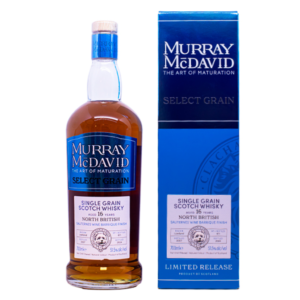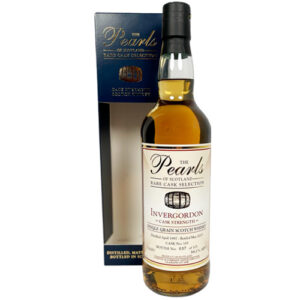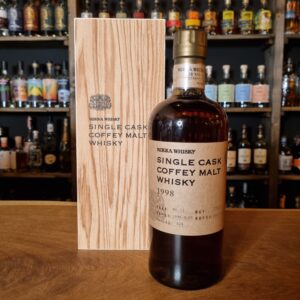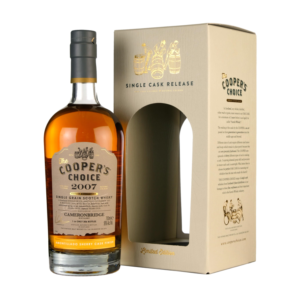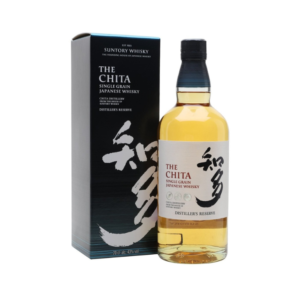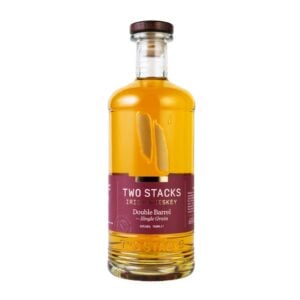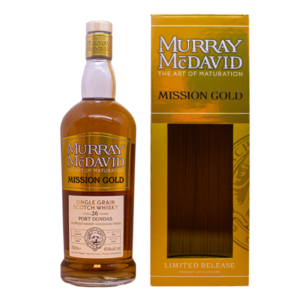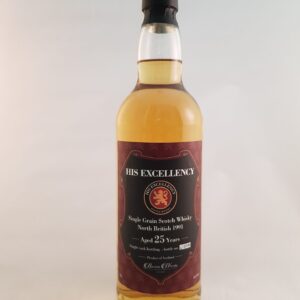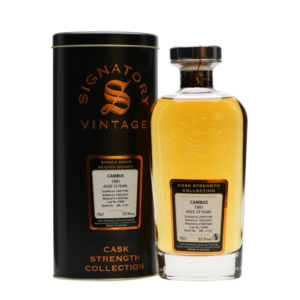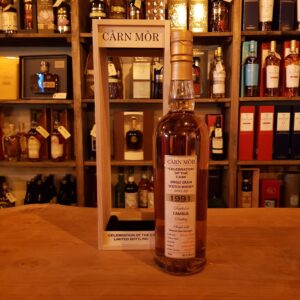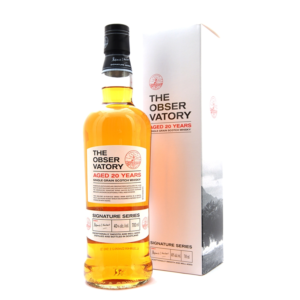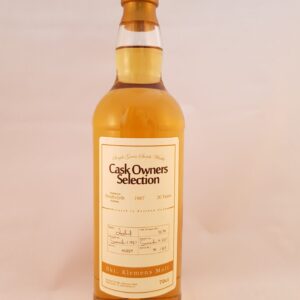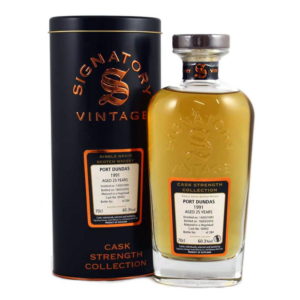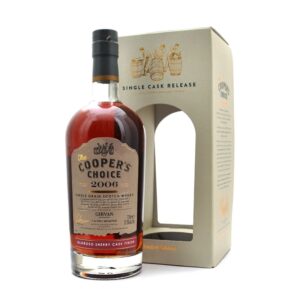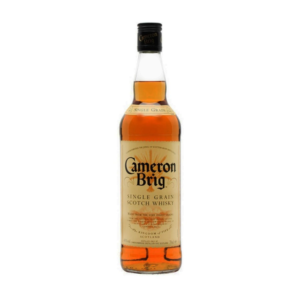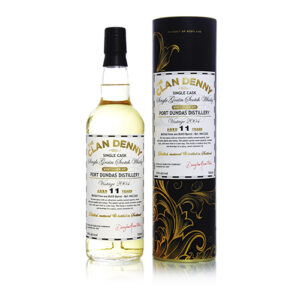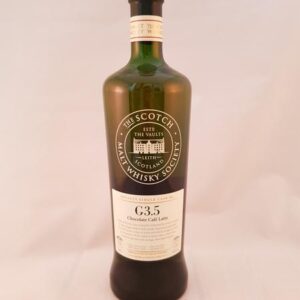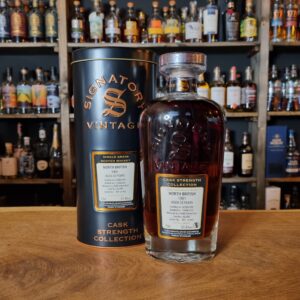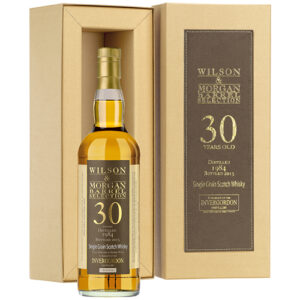Showing all 23 resultsSorted by popularity
Single Grain Whisky – The Complete Guide
TL;DR: In Short
- Single Grain whisky is characterized by being produced at a single distillery using grains other than malted barley
- Primarily made from corn, wheat, or rye and defined by its column still distillation process
- Found in several styles, including light and delicate, rich and sweet, and spicy and complex
- Best enjoyed neat or with a drop of water and can be experienced in cocktails like a Highball or Old Fashioned
Disclaimer: This guide is intended for informational purposes for adults over 18 years of age. Vault of Spirits encourages responsible alcohol consumption.
Introduction to Single Grain Whisky
Single Grain whisky has a rich history and fascinating craftsmanship behind it. From its origins in Scotland to its global popularity today, this spirit has evolved to become one of the world’s most underappreciated whisky categories. This guide provides you with insight into the production, flavor notes, and enjoyment of Single Grain whisky, whether you’re a beginner or an experienced enthusiast.
How Did Single Grain Whisky Originate?
From Past to Present
Single Grain whisky emerged in Scotland during the early 19th century as an evolution of whisky production techniques. The introduction of the patent still (or Coffey still) in 1831 revolutionized whisky production, making it possible to distill grain spirits more efficiently than traditional pot stills.
Initially, grain whisky was primarily created to be blended with malt whisky, forming the backbone of blended Scotch. The term “single” simply indicates that the whisky comes from a single distillery, rather than being a blend from multiple distilleries.
Which Historical Milestones Have Shaped Single Grain Whisky?
The Spirits Act of 1860 was a pivotal moment for grain whisky, officially recognizing it as a distinct category. This legislation allowed distillers to use grains other than malted barley, opening up new possibilities for flavors and production methods.
Another significant milestone came during the late 20th century when single grain whiskies began to be bottled and marketed as standalone products rather than merely components for blends. This shift helped consumers appreciate the unique qualities of grain whisky on its own merits.
How Has Single Grain Whisky Influenced Cultural Traditions?
While single malt has often dominated the spotlight, single grain whisky has played a crucial role in whisky culture. In Scotland, grain distilleries became important employers and economic drivers in the regions where they operated.
The efficiency of grain whisky production helped make whisky more accessible to the general public, transforming it from a luxury item to a more everyday spirit. This democratization of whisky contributed significantly to its global spread and popularity.
Why Is Single Grain Whisky Popular Today?
In recent years, single grain whisky has experienced a renaissance as whisky enthusiasts seek new experiences beyond traditional single malts. Aged single grain expressions, in particular, have gained recognition for their exceptional value and complex flavor profiles.
Contemporary whisky drinkers appreciate single grain for its versatility and often lighter, more approachable character. The category has also benefited from the craft spirits movement, with new producers exploring innovative approaches to grain whisky production.
How Is Single Grain Whisky Made?
Which Raw Materials Are Used in Production?
Single grain whisky uses a diverse range of grains in its production, offering distillers flexibility to create distinctive flavor profiles.
Primary ingredients:
- Corn (Maize) – Often the predominant grain, providing sweetness and a smooth texture
- Wheat – Contributes softness and subtle bread-like notes
- Rye – Adds spicy complexity and distinctive character
- Malted Barley – While not the main ingredient, a small percentage is required for enzymatic conversion
How Does the Fermentation Process Work?
The fermentation of grain whisky begins with milling the grains into a coarse flour called grist. This is mixed with hot water in a mash tun to extract fermentable sugars. Unlike single malt production, grain whisky often uses a continuous mashing process rather than batch processing.
After cooling, yeast is added to the liquid (called wort) in large fermentation vessels. The yeast converts the sugars into alcohol over approximately 48-72 hours. This fermentation produces a wash with an alcohol content of around 7-10% ABV.
The specific yeast strains used can significantly influence the final flavor profile, with some distilleries maintaining their proprietary yeast cultures for consistency.
Which Distillation Techniques Are Used?
The defining characteristic of single grain whisky production is the use of continuous distillation in column stills (also called Coffey or patent stills), rather than the pot stills used for single malt.
Common distillation methods:
- Continuous Column Distillation – Creates a higher-proof, cleaner spirit with fewer congeners
- Multi-Column Systems – Allowing for greater control over the final spirit character
- Hybrid Distillation – Some producers use a combination of column and pot stills for complexity
This efficient distillation process typically produces a spirit with an alcohol content of around 94% ABV, significantly higher than pot still distillation.
What Is the Significance of Maturation?
Maturation is where single grain whisky truly develops its character. The new make spirit is filled into oak casks, traditionally ex-bourbon barrels from America, but also sherry casks, wine barrels, or virgin oak.
During maturation, the whisky extracts compounds from the wood while losing the harsher elements through evaporation (the “angel’s share”). The porous nature of oak allows oxygen to interact with the spirit, softening it and developing complexity.
Grain whisky often matures more quickly than malt whisky due to its lighter character, though many connoisseurs seek out well-aged expressions (20+ years) for their exceptional depth and smoothness.
Which Regions Are Known for Single Grain Whisky?
Where Are the Best Variants Produced?
Scotland remains the spiritual home of single grain whisky, with several notable distilleries including Cameronbridge, Invergordon, North British, and Strathclyde. These large-scale operations primarily produce grain whisky for blending, though independent bottlings of their single grain products are increasingly available.
Japan has also developed a significant tradition of grain whisky production, with distilleries like Chita and Fuji Gotemba producing exceptional examples that showcase Japanese precision and craftsmanship.
Other regions producing notable grain whiskies include Ireland, Canada (where it forms the basis of much Canadian whisky), and increasingly, craft distilleries in the United States.
How Do Geography and Climate Affect the Flavor?
While grain whisky production is less tied to terroir than single malt, the maturation environment plays a crucial role in flavor development. Scottish grain distilleries benefit from the moderate, humid climate that allows for gentle, consistent maturation.
In warmer climates, such as parts of the United States or Australia, grain whisky matures more rapidly, extracting wood flavors more aggressively and experiencing higher rates of evaporation.
The water source can also impart subtle characteristics, with some distilleries highlighting their access to particularly soft or mineral-rich water sources.
What New Trends Are Seen in Single Grain Whisky Production?
Craft distillers worldwide are reimagining grain whisky, experimenting with heritage and alternative grains like spelt, oats, or triticale to create distinctive flavor profiles.
There’s also growing interest in terroir-focused grain whisky, with some producers using locally grown grains and emphasizing the connection to specific agricultural regions.
Innovative cask finishing has become increasingly common, with producers transferring grain whisky into rum, wine, or other specialty casks for additional flavor complexity.
What Do the Different Quality Designations Mean?
For Scotch grain whisky, the term “single grain” legally indicates that the whisky was produced at a single distillery using cereal grains (which may include malted barley), water, and yeast.
Age statements on single grain whisky indicate the youngest whisky in the bottle. Non-age-statement (NAS) expressions may contain whisky of various ages blended together.
Other common terms include “cask strength” (bottled without dilution), “single cask” (from one specific barrel), and “finished” or “double matured” (indicating a secondary maturation period in a different type of cask).
How Does Single Grain Whisky Taste?
What Characterizes the Typical Flavor Profile?
Single grain whisky typically exhibits a lighter, cleaner profile than single malt, with distinctive sweet notes and a smooth mouthfeel. Many describe it as more accessible and less intense than malt whisky.
Typical aromas:
- Sweet notes – Vanilla, caramel, toffee, butterscotch
- Grain character – Cereal, corn, fresh bread, oatmeal
- Fruit elements – Citrus, green apple, pear, tropical fruits
On the palate, expect a silky texture with a balance between sweetness and gentle spice. The finish is often clean and less lingering than single malt, though well-aged examples can provide remarkable depth.
How Does the Flavor Vary Between Different Styles?
Corn-dominant grain whiskies often display pronounced sweetness with vanilla and caramel notes, creating a smooth, approachable profile. These form the backbone of many light, elegant expressions.
Wheat-based grain whiskies tend toward soft, delicate profiles with subtle honey and floral characteristics. These create some of the most gentle and refined expressions.
Rye-forward grain whiskies develop more assertive spice notes, with pepper, cinnamon, and distinctive grassiness balancing the sweetness. These create more robust, characterful whiskies.
How Does the Flavor Develop with Age?
Young grain whisky (under 10 years) typically exhibits vibrant grain character with pronounced sweetness and fresh fruit notes. The spirit is often quite clean but may lack complexity.
Mid-aged grain whisky (10-18 years) develops richer caramel and toffee notes, with the grain character becoming more integrated and subtle. Wood influence becomes more apparent with vanilla and gentle spice.
Well-aged grain whisky (18+ years) can be remarkably complex, developing antique furniture notes, dark chocolate, dried fruits, and a silky, almost syrupy texture. Many whisky connoisseurs consider these aged expressions to be hidden gems in the whisky world.
What Signs Reveal High Quality?
High-quality single grain whisky displays balance between grain character, wood influence, and maturation effects. The spirit should be clean without harsh alcohol notes, even at higher proofs.
Complexity is a key indicator of quality, with multiple layers of flavor that evolve as you taste. A good grain whisky should reveal new dimensions as it opens up in the glass.
Texture is another important quality marker – premium grain whisky should have a smooth, viscous mouthfeel without seeming thin or watery.
Finally, a harmonious, lingering finish that gradually fades rather than abruptly disappearing indicates careful production and maturation.
How Is Single Grain Whisky Best Enjoyed?
What Is the Optimal Serving Method?
Single grain whisky is remarkably versatile and can be enjoyed in several ways. For thoughtful appreciation, try it neat in a proper whisky glass, allowing it to breathe for a few minutes before tasting.
Adding a few drops of spring water can help “open up” the whisky, releasing additional aromas and softening the alcohol. This is particularly beneficial for higher-proof expressions.
For casual enjoyment, grain whisky makes an excellent base for highball cocktails, where its clean, sweet character pairs beautifully with soda water and a twist of citrus.
Which Glass and Temperature Are Ideal?
A tulip-shaped glass, such as a Glencairn, is ideal for appreciating single grain whisky. The narrow top concentrates aromas while the wider bowl allows the spirit to breathe.
Serve single grain whisky at slightly below room temperature (around 15-18°C or 60-65°F). Too cold, and the more subtle flavors will be suppressed; too warm, and the alcohol may dominate.
Avoid chilling the glass, as this can inhibit the release of aromas. If you prefer your whisky cooler, large ice spheres or cubes melt more slowly and cause less dilution than small cubes.
How Do You Taste Like an Expert?
Begin by examining the whisky’s color, which can provide clues about cask type and age. Hold the glass against a white background for the best assessment.
Next, nose the whisky gently. Keep your mouth slightly open as you inhale to avoid overwhelming your senses. Try to identify different aroma families: sweet, fruity, grainy, woody, spicy.
When tasting, take a small sip and let it coat your entire mouth before swallowing. Consider the texture, initial flavors, development on the palate, and the length and character of the finish.
Between tastings, cleanse your palate with still water or a neutral cracker. Avoid strong flavors that might interfere with your perception.
Which Dishes Complement Single Grain Whisky?
Lighter grain whiskies pair beautifully with seafood, particularly smoked salmon or delicate sushi. The whisky’s clean character won’t overwhelm the subtle flavors.
Sweeter, corn-forward expressions complement desserts like crème brûlée, vanilla ice cream, or buttery shortbread. The shared vanilla and caramel notes create a harmonious pairing.
Spicier, more robust grain whiskies stand up well to grilled meats, mild cheeses, or chocolate desserts. The whisky’s sweetness can balance savory or slightly spicy foods.
For cheese pairings, try milder options like Gouda, Comté, or young Cheddar, which won’t overpower the grain whisky’s more delicate profile.
Which Cocktails Can Be Made with Single Grain Whisky?
Which Classic Cocktails Should You Know?
Highball
Ingredients: 50ml single grain whisky, 100ml soda water, lemon twist
Preparation: Build in a tall glass over ice, stir gently, garnish with lemon
History: The simple highball has been a staple in Japan, where grain whisky is often the preferred base for this refreshing drink
Old Fashioned
Ingredients: 50ml single grain whisky, 1 sugar cube, 2-3 dashes Angostura bitters, orange peel
Preparation: Muddle sugar with bitters, add whisky and ice, stir, and garnish with orange peel
History: Dating back to the early 19th century, the Old Fashioned is one of the oldest cocktails, with grain whisky offering a lighter alternative to traditional bourbon
Which Modern Cocktails Are Worth Trying?
The Grain Sour combines 50ml single grain whisky, 25ml fresh lemon juice, 20ml honey syrup, and an optional egg white for a silky texture. Shake vigorously with ice and strain into a chilled glass. The honey complements the natural sweetness of the grain whisky.
A Tokyo Sunset mixes 45ml single grain whisky with 15ml yuzu juice, 10ml ginger syrup, and a splash of soda. Served tall over ice with a grapefruit slice, this drink highlights the clean, versatile nature of grain whisky.
For something more complex, try the Orchard Harvest: 50ml grain whisky, 20ml apple liqueur, 10ml cinnamon syrup, and 2 dashes of walnut bitters. Stir with ice and garnish with a thin apple slice.
How Is Single Grain Whisky Enjoyed Neat?
To enjoy single grain whisky neat, serve it in a proper whisky glass at slightly below room temperature. Allow it to rest for a few minutes after pouring to “open up” in the glass.
For higher proof expressions, adding a few drops of spring water can reduce the alcohol burn and release additional aromas. Experiment with different amounts to find your preferred strength.
“On the rocks” is another option, with the gradual dilution changing the whisky’s character as you drink. Consider using a large ice sphere for minimal dilution while still cooling the spirit.
Which Homemade Variants Can You Experiment With?
Try creating your own infused grain whisky by adding ingredients like vanilla pods, cinnamon sticks, or dried fruit to a bottle for 1-2 weeks. The clean profile of grain whisky provides an excellent canvas for these flavors.
Home blending offers another avenue for experimentation. Combine different grain whiskies or add a touch of peated single malt to create your own custom expression with unique character.
For a quick flavor enhancement, try a rinse or spray of complementary spirits. Rinse a glass with a small amount of sweet vermouth or spray a mist of Islay whisky over your pour of grain whisky for added complexity.
What Should You Know Before Buying Single Grain Whisky?
Which Details Should You Pay Attention to When Buying?
Look for the distillery name on independent bottlings, as certain grain distilleries (like Cameronbridge or North British) have distinctive house styles. Some producers may only list the region if the distillery name is protected.
Age statements are particularly important for grain whisky, as older expressions (15+ years) often offer exceptional quality relative to similarly aged single malts. The age refers to the youngest whisky in the bottle.
Cask information can provide insight into flavor expectations. Ex-bourbon barrels typically yield vanilla and caramel notes, while sherry casks contribute dried fruit and nutty characteristics.
Bottling strength significantly affects both flavor intensity and value. Cask strength offerings provide more flexibility as you can adjust to your preferred drinking strength.
What Do You Get for Your Money in Different Price Ranges?
Entry-level single grain whiskies ($30-50) typically offer young to mid-aged expressions with clean, sweet profiles suitable for everyday enjoyment or cocktails. These provide a good introduction to the category.
Mid-range options ($50-100) include more mature expressions (12-18 years) with greater complexity and depth. These often represent excellent value compared to single malts of similar age.
Premium grain whiskies ($100-200) feature well-aged expressions (18-25 years) with remarkable depth and nuance. These showcase the full potential of grain whisky when given extended maturation.
Ultra-premium bottlings ($200+) include rare vintage releases, often 30+ years old, offering extraordinary complexity and collector appeal. These can rival or exceed much more expensive single malts in quality.
How Is Single Grain Whisky Properly Stored?
Store bottles upright to prevent the high-alcohol content from degrading the cork. Unlike wine, whisky doesn’t benefit from horizontal storage.
Keep bottles away from direct sunlight and temperature fluctuations, which can affect flavor over time. A cool, dark cabinet is ideal for long-term storage.
Once opened, whisky will gradually oxidize. If a bottle is less than half full and you don’t plan to finish it soon, consider transferring it to a smaller container to minimize air exposure.
There’s no rush to consume an opened bottle, but for optimal flavor, try to finish it within 1-2 years of opening. The higher the remaining volume, the longer it will maintain its character.
Is Single Grain Whisky a Good Investment?
Well-aged single grain whiskies from closed distilleries like Caledonian, Cambus, or Port Dundas have seen significant appreciation in value. These represent a finite supply that cannot be replicated.
Limited edition releases and independent bottlings from respected companies like Compass Box, Signatory, or Douglas Laing can increase in value, particularly those with unusual cask treatments or exceptional age statements.
Compared to single malt, grain whisky often represents better value for collectors just entering the investment market, with lower entry prices but similar potential for appreciation.
As always with spirit investment, focus on quality and rarity rather than speculation. The best investment is in bottles you’d be happy to drink if they don’t increase in value.
Which Brands Do We Recommend?
What’s Best for Beginners?
Haig Club is designed as an accessible introduction to grain whisky, with a light, sweet profile featuring vanilla and caramel notes. Its distinctive blue bottle makes it instantly recognizable.
Compass Box Hedonism offers a more premium entry point, blending grain whiskies from different distilleries to create a harmonious expression with notes of vanilla, coconut, and caramel.
The Girvan Patent Still range, particularly their No.4 Apps expression, showcases the clean, elegant style of William Grant’s grain distillery with approachable sweetness and subtle complexity.
What Will Impress Enthusiasts?
North British 25 Year Old displays remarkable depth with tropical fruit notes, rich toffee, and subtle spice. This Edinburgh distillery produces some of Scotland’s most respected grain whisky.
Invergordon expressions from independent bottlers like Signatory or Gordon & MacPhail, especially those with 20+ years of age, offer exceptional complexity with notes of polished oak, stewed fruits, and baking spices.
Nikka Coffey Grain from Japan demonstrates a distinctive approach to grain whisky, using primarily corn but distilled in traditional Coffey stills for a uniquely complex expression with tropical fruit and vanilla notes.
Which Bottles Are Most Sought After?
Port Dundas releases over 30 years old are highly coveted since this historic Glasgow distillery closed in 2010. These bottles offer both drinking pleasure and collection potential.
Cambus, closed since 1993, produces extraordinarily silky, complex grain whisky. Releases from this lost distillery, particularly those from independent bottlers, command premium prices.
Special edition releases from Compass Box, such as limited Hedonism variants or anniversary bottlings, combine artistic presentation with carefully selected exceptional grain whiskies.
Where Do You Get the Most Value for Money?
Cameronbridge 12-15 year expressions from independent bottlers offer exceptional value, often priced well below equivalent-aged single malts despite comparable complexity.
The Exclusive Grains range from Douglas Laing presents carefully selected single casks at reasonable prices, often featuring distilleries that rarely release their grain whisky as a single expression.
Boutique-y Whisky Company’s grain whisky bottlings combine quirky label art with carefully selected casks, offering unusual expressions at accessible price points for the quality offered.
Frequently Asked Questions
What Is Single Grain Whisky?
Single grain whisky is a type of whisky made at a single distillery using a mixture of grains that may include corn, wheat, rye, and a small amount of malted barley. Unlike single malt, which is made entirely from malted barley, single grain utilizes other grains and is typically distilled in column stills rather than pot stills. The term “single” refers to the fact that it comes from a single distillery, not that it uses only one type of grain.
How Is Single Grain Whisky Produced?
Single grain whisky production begins with milling a mixture of grains, which is then mixed with hot water to extract fermentable sugars. After cooling, yeast is added to create alcohol through fermentation. The resulting liquid is distilled in continuous column stills, which produce a higher-proof, lighter spirit than pot stills. This new make spirit is then matured in oak casks (typically ex-bourbon barrels) for at least three years, though many expressions are aged much longer. The whisky may be filtered and reduced to bottling strength before packaging.
What Characterizes Single Grain Whisky?
Single grain whisky is typically characterized by a lighter, cleaner flavor profile than single malt, with pronounced sweetness and smooth mouthfeel. Common flavor notes include vanilla, caramel, light fruit, and subtle spice. The column still distillation process removes more congeners, resulting in a more delicate spirit. While often overlooked in favor of single malt, well-aged grain whiskies can develop remarkable complexity and depth, with rich toffee, tropical fruit, and polished oak notes emerging with extended maturation.
Where Can You Buy Single Grain Whisky?
Single grain whisky can be purchased from specialty whisky retailers, well-stocked liquor stores, and online spirits merchants. While not as widely available as single malt or blended Scotch, the category’s growing popularity has increased its presence in the market. For rare or independent bottlings, specialized whisky shops or online retailers like Master of Malt, The Whisky Exchange, or specialized auction sites offer the best selection. Many distilleries also offer direct purchases through their websites, though single grain distilleries rarely sell directly to consumers since most of their production goes to blends.

